Period 132 AD – 135 AD | Location Judea | |
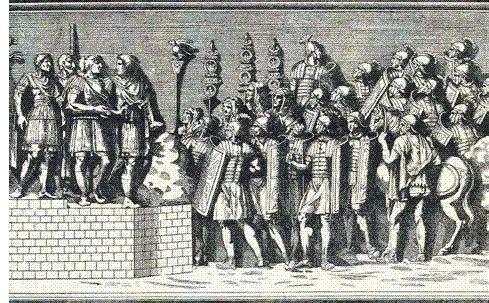 | ||
Similar | ||
The Bar Kokhba revolt (Hebrew: מרד בר כוכבא; Mered Bar Kokhba) was a rebellion of the Jews of the Roman province of Judea, led by Simon bar Kokhba, against the Roman Empire. Fought circa 132–136 CE, it was the last of three major Jewish–Roman wars, so it is also known as The Third Jewish–Roman War or The Third Jewish Revolt. Some historians also refer to it as the Second Revolt of Judea, not counting the Kitos War (115–117 CE), which had only marginally been fought in Judea.
Contents
- Background
- Eruption of the revolt
- Rufus campaign and guerrilla warfare
- Julius Severus campaign
- Battle of Tel Shalem
- Siege of Betar
- Aftermath
- Casualties
- Immediate consequences
- Later relations between the Jews and the Roman Empire
- Legacy
- Geographic extent of the revolt
- Cave of Letters
- Roman Imperial inscription in Jerusalem
- Betar fortress
- References
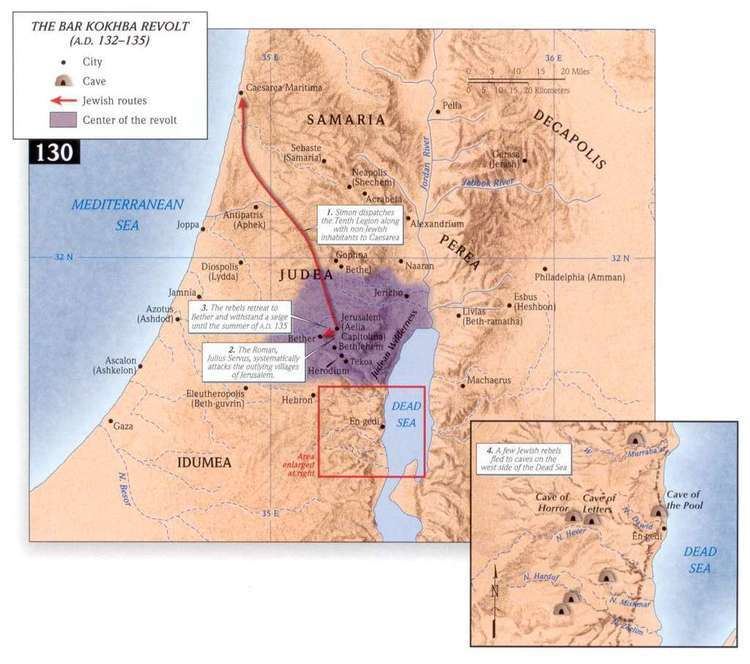
The revolt erupted as a result of ongoing religious and political tensions in Judea following on the failure of the First Revolt in 66−70 CE. These tensions were related to the establishment of a large Roman presence in Judea, changes in administrative life and the economy, together with the outbreak and suppression of Jewish revolts from Mesopotamia to Libya and Cyrenaica. The proximate reasons seem to centre around the proscription of circumcision, the construction of a new city, Aelia Capitolina, over the ruins of Jerusalem, and the erection of a temple to Jupiter on the Temple Mount. The Church Fathers and rabbinic literature emphasize governor of Judaea Rufus' role in provoking the revolt.

In 132, a revolt led by Bar Kokhba quickly spread from Modi'in across the country, cutting off the Roman garrison in Jerusalem. Roman Governor Rufus then unsuccessfully engaged the early phase of the uprising. Rufus is last recorded in 132, the first year of the rebellion; whether he died or was replaced is uncertain, but Gargilius Antiques is recorded as the Roman Prefect of Judea during the conflict. Initial rebel victories over the Romans established an independent state of Israel over parts of Judea for over two years, as Bar Kokhba took the title of Nasi ("prince"). Simon bar Kokhba, the commander of the revolt, was regarded by many Jews as the Messiah, who would restore their national independence. This setback, however, caused Roman Emperor Hadrian to assemble a large scale Roman force from across the Empire, which invaded Judea in 134 under the command of Roman General Sextus Julius Severus. The Roman army was made of six full legions with auxiliaries and elements from up to six additional legions, which finally managed to crush the revolt.

The Bar Kokhba revolt resulted in the extensive depopulation of Judean communities, more so than the First Jewish–Roman War of 70 CE. According to Cassius Dio, 580,000 Jews perished in the war and many more died of hunger and disease. In addition, many Judean war captives were sold into slavery. The Jewish communities of Judea were devastated to an extent which some scholars describe as a genocide. Roman casualties were also considered heavy - XXII Deiotariana was disbanded after serious losses. In addition, some historians argue that Legio IX Hispana's disbandment in the mid-2nd century could also have been a result of this war. In an attempt to erase any memory of Judea or Ancient Israel, Emperor Hadrian wiped the name off the map and replaced it with Syria Palaestina.
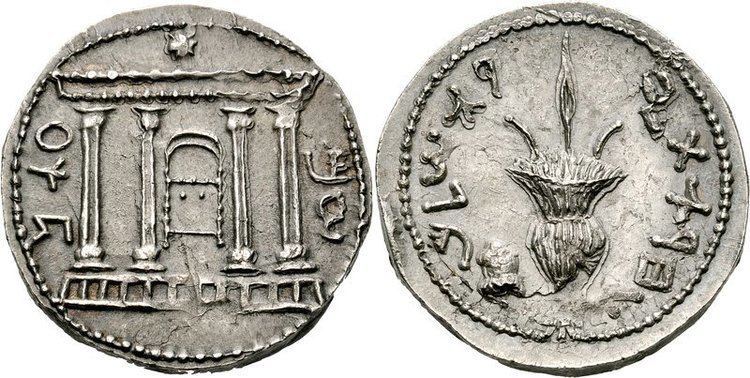
The Bar Kokhba revolt greatly influenced the course of Jewish history and the philosophy of the Jewish religion. Despite easing the persecution of Jews following Hadrian's death in 138 CE, the Romans barred Jews from Jerusalem, except for attendance in Tisha B'Av. Jewish messianism was abstracted and spiritualized, and rabbinical political thought became deeply cautious and conservative. The Talmud, for instance, refers to Bar Kokhba as "Ben-Kusiba," a derogatory term used to indicate that he was a false Messiah. It was also among the key events to differentiate Christianity as a religion distinct from Judaism. Although Jewish Christians regarded Jesus as the Messiah and did not support Bar Kokhba, they were barred from Jerusalem along with the Jews.
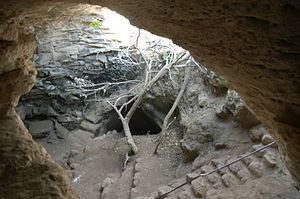
Background
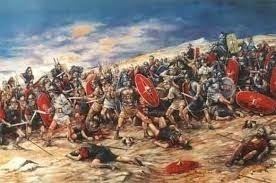
After the First Jewish–Roman War in 70 CE, the Roman authorities took measures to suppress the rebellious province of Judea. Instead of a procurator, they installed a praetor as a governor and stationed an entire legion, the X Fretensis, in the area. Tensions continued to build up in the wake of the Kitos War, the second large-scale Jewish insurrection in the Eastern Mediterranean, the final stages of which saw fighting in Judea.
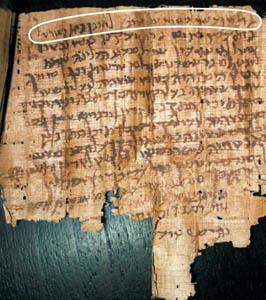
Historians have suggested multiple reasons for the sparking of the Bar Kokhba revolt, long-term and proximate. The revolt is shrouded in mystery, and only one brief historical account of the rebellion survives. Several elements are believed to have contributed to the rebellion; changes in administrative law, the diffuse presence of Romans, alterations in agricultural practice with a shift from landowning to sharecropping, the impact of a possible period of economic decline, and an upsurge of nationalism, the latter influenced by similar revolts among the Jewish communities in Egypt, Cyrenaica, Libya and Mesopotamia during the reign of Trajan. The proximate reasons seem to centre around the proscription of circumcision, the construction of a new city, Aelia Capitolina, over the ruins of Jerusalem, and the erection of a temple to Jupiter on the Temple mount. One interpretation involves the visit in 130 CE of the Roman Emperor Hadrian to the ruins of the Jewish Temple in Jerusalem. At first sympathetic towards the Jews, Hadrian promised to rebuild the Temple, but the Jews felt betrayed when they found out that he intended to build a temple dedicated to Jupiter upon the ruins of the Second Temple. A rabbinic version of this story claims that Hadrian planned on rebuilding the Temple, but that a malevolent Samaritan convinced him not to. The reference to a malevolent Samaritan is, however, a familiar device of Jewish literature.
An additional legion, the VI Ferrata, arrived in the province to maintain order. Works on Aelia Capitolina, as Jerusalem was to be called, commenced in 131 CE. The governor of Judea, Tineius Rufus, performed the foundation ceremony, which involved ploughing over the designated city limits. "Ploughing up the Temple", seen as a religious offence, turned many Jews against the Roman authorities. The Romans issued a coin inscribed Aelia Capitolina.
A disputed tradition, based on the single source of the Historia Augusta, regarded as 'unreliable and problematic,' states that the Jews undertook the war because they were forbidden to mutilate their genitals (mutilare genitalia ) taken to mean brit milah. Were the claim true it has been conjectured that Hadrian, as a Hellenist, would have viewed circumcision as a form of mutilation. The claim is often considered suspect.
Eruption of the revolt
Jewish leaders carefully planned the second revolt to avoid the numerous mistakes that had plagued the first Great Jewish Revolt sixty years earlier. In 132, a revolt led by Bar Kokhba quickly spread from Modi'in across the country, cutting off the Roman garrison in Jerusalem.
Eusebius of Caesarea wrote that Jewish Christians were killed and suffered "all kinds of persecutions" at the hands of rebel Jews when they refused to help Bar Kokhba against the Roman troops.
The Jewish sage Rabbi Akiva indulged the possibility that Simon Bar Kosiba could be the Jewish messiah, and gave him the surname "Bar Kokhba" meaning "Son of a Star" in the Aramaic language, from the Star Prophecy verse from Numbers 24:17: "There shall come a star out of Jacob". The name Bar Kokhba does not appear in the Talmud but in ecclesiastical sources.
Rufus' campaign and guerrilla warfare
The governor of Judaea Rufus unsuccessfully engaged the early phase of the Judean uprising under Simon bar Kokhba and Elasar. The Church Fathers and rabbinic literature emphasize his role in provoking the revolt. He is last recorded in 132, the first year of the rebellion; whether he died or was simply replaced is uncertain. His replacement, Prefect Gargilius Antiques, is attributed to the failure of initial Roman campaign to suppress the rebellion.
Simon Bar Kokhba took the title Nasi Israel and ruled over an entity that was virtually independent for two and a half years. The era of the redemption of Israel was announced, contracts were signed and a large quantity of Bar Kokhba Revolt coinage was struck over foreign coins.
The outbreak and initial success of the rebellion took the Romans by surprise. The rebels incorporated combined tactics to fight the Roman Army. According to some historians, Bar Kokhba's army practiced guerrilla warfare, inflicting heavy casualties. Others, however, claim that Bar Kokhba actually preferred direct engagement due to his superiority in numbers, and only after several painful defeats in the fields did the Romans decide to avoid open conflict and methodically besiege individual cities. With the slowly advancing Roman army cutting supply lines, the rebels engaged in long-term defense. The defense system of Judean towns and villages was based mainly on hideout caves, which were created in large numbers in almost every population center. Many houses utilized underground hideouts, where Judean rebels hoped to withstand Roman superiority by the narrowness of the passages and even ambushes from underground. The cave systems were often interconnected and used not only as hideouts for the rebels but also for storage and refuge for their families. Hideout systems were employed in the Judean hills, the Judean desert, northern Negev, and to some degree also in Galilee, Samaria and Jordan Valley. As of July 2015 some 350 hideout systems have been mapped within the ruins of 140 Jewish villages.
Julius Severus' campaign
Following a series of setbacks, Hadrian called his general Sextus Julius Severus from Britain, and troops were brought from as far as the Danube. The size of the Roman army amassed against the rebels was much larger than that commanded by Titus sixty years earlier - nearly one third of the Roman army took part in the campaign against Bar Kokhba. It is estimated that forces from 12 Legions participated in Severus' final campaign, including Legio X Fretensis, Legio VI Ferrata, Legio III Gallica, Legio III Cyrenaica, Legio XXII Deiotariana, Legio X Gemina, Legio V Macedonica, Legio XI Claudia, Legio II Traiana Fortis and Legio XII Fulminata, with a total force of 60,000–120,000 Roman soldiers facing Bar-Kokhba's rebels. While it is generally accepted that Legio XXII Deiotariana was destroyed during the revolt, it is not clear whether the legion's fall occurred in the initial stages of the revolt or during the decisive campaign of Sextus Julius Severus. A similar case may be assumed about Legio IX Hispana, whose disappearance during the second century is often attributed to this war.
Battle of Tel Shalem
According to some views, one of the crucial battles of the war took place near Tel Shalem in the Beit She'an valley, near what is now identified as the legionary camp of Legio VI Ferrata. Next to the camp, archaeologists have unearthed the remnants of a triumphal arch, which featured a dedication to Emperor Hadrian, which most likely refers to the defeat of Bar Kokhba's army. Additional finds at Tel Shalem, including a bust of Emperor Hadrian, specifically link the site to the period. The theory for a major battle in Tel Shalem implies a significant extension of the area of the rebellion - while some historians confine the conflict to Judea proper, the location of Tel Shalem suggests that the war encompassed the northern Jordan Valley as well, some 50 km north to the boundaries of the war per minimalistic approach.
Siege of Betar
After losing many of their strongholds, Bar Kokhba and the remnants of his army withdrew to the fortress of Betar, which subsequently came under siege in the summer of 135. Legio V Macedonica and Legio XI Claudia are said to have taken part in the siege. According to Jewish tradition, the fortress was breached and destroyed on the fast of Tisha B'av, the ninth day of the lunar month Av, a day of mourning for the destruction of the First and the Second Jewish Temple. Rabbinical literature ascribes the defeat to Bar Kokhba killing his maternal uncle, Rabbi Elazar Hamudaʻi, after suspecting him of collaborating with the enemy, thereby forfeiting Divine protection. The horrendous scene after the city's capture could be best described as a massacre. The Jerusalem Talmud relates that the number of dead in Betar was enormous, that the Romans "went on killing until their horses were submerged in blood to their nostrils."
Aftermath
According to a Rabbinic midrash, in addition to Bar Kokhba himself, the Romans executed eight leading members of the Sanhedrin (The list of Ten Martyrs include two earlier Rabbis): R. Akiva; R. Hanania ben Teradion; the interpreter of the Sanhedrin, R. Huspith; R. Eliezer ben Shamua; R. Hanina ben Hakinai; R. Jeshbab the Scribe; R. Yehuda ben Dama; and R. Yehuda ben Baba. The Rabbinic account describes agonizing tortures: R. Akiva was flayed with iron combs, R. Ishmael had the skin of his head pulled off slowly, and R. Hanania was burned at a stake, with wet wool held by a Torah scroll wrapped around his body to prolong his death.
Following the Fall of Betar, the Roman legions went on a rampage of systematic killing, eliminating all remaining Jewish villages in the region and seeking out the refugees. The historians argue for the exact period of Roman campaign, following the defeat in Betar. While some claim the resistance was broken shortly, others argue that pockets of Jewish rebels continued to hide with their families into the winter months of late 135 and possibly even spring 136. By early 136 however, it is clear that the revolt was defeated.
Casualties
According to Cassius Dio, 580,000 Jews were killed in the overall operations, and 50 fortified towns and 985 villages were razed to the ground, with many more Jews dying of famine and disease. Schäfer, however, suggested that Dio likely exaggerated his numbers. On the other hand, Cotton considered Dio's figures highly plausible, in light of accurate Roman census declarations. In addition, many Judean war captives were sold into slavery.
Cassius Dio also claimed that "Many Romans, moreover, perished in this war. Therefore, Hadrian, in writing to the Senate, did not employ the opening phrase commonly affected by the emperors: 'If you and your children are in health, it is well; I and the army are in health.'" XXII Deiotariana was disbanded after serious losses. In addition, some historians argue that Legio IX Hispana disbandment in the mid-2nd century could also have been a result of this war. While previously it had generally been accepted that the Ninth disappearance was after 108 CE (thus possibly suffering a demise in Britain according to Mommsen), with the 2015 Nijmegen archaeological findings dated to 121 CE and the known inscriptions of two senior officers, who were deputy commanders of the Ninth in 120 CE, and lived on for several decades to lead distinguished public careers, it was concluded that the Legion was disbanded between 120 and 197 CE - either as a result of the Bar-Kokhba revolt (132-6) or Cappadocia (161) or at the Danube (162).
Immediate consequences
Hadrian's proclamations sought to root out the nationalistic features within Judea's Jewish communities, which he saw as the cause of continuous rebellions. He prohibited the Torah law and the Hebrew calendar, and executed Judaic scholars. The sacred scroll was ceremonially burned on the Temple Mount. At the former Temple sanctuary, he installed two statues, one of Jupiter, another of himself. In an attempt to erase any memory of Judea or Ancient Israel, he wiped the name off the map and replaced it with Syria Palaestina. By destroying the association of Jews to Judea and forbidding the practice of Jewish faith, Hadrian aimed to root out a nation that inflicted heavy casualties on the Roman Empire. Similarly, he re-established Jerusalem, but now as the Roman pagan polis of Aelia Capitolina, and Jews were forbidden from entering it, except on the day of Tisha B'Av.
Modern historians view the Bar-Kokhba Revolt as being of decisive historic importance. They note that, unlike the aftermath of the First Jewish–Roman War chronicled by Josephus, the majority of the Jewish population of Judea was either killed, exiled, or sold into slavery after the Bar-Kokhba Revolt, and Jewish religious and political authority was suppressed far more brutally. The Jews became a minority in Judea, remaining strong only in the Galilee, Bet Shean and the Golan. The massive destruction and loss of life occasioned by the revolt has led some scholars such as Bernard Lewis to date the beginning of the Jewish diaspora from this date. Hadrian's death in 138 CE marked a significant relief to the surviving Jewish communities. Some of the Judean survivors resettled in Galilee, with Sepphoris being one of the centers where rabbinical families from Judea relocated. Rabbinic Judaism had already become a portable religion, centered around synagogues.
Judea would not be a center of Jewish religious, cultural, or political life again until the modern era, although Jews continued to sporadically populate it and important religious developments have still taken place. The Galilee became a more important center for Rabbinic Judaism, where the Jerusalem Talmud was compiled in 4th-5th centuries CE. In the aftermath of the defeat of Bar Kokhba revolt, the consolidation of Jewish settlement in Palestine became of major concern to the rabbinate. The Sages endeavoured to halt Jewish migration into diaspora, and even banned emigration from Palestine, branding those who settled outside its borders as idolaters.
Later relations between the Jews and the Roman Empire
The relations of the Jews with the Roman Empire in the region continued to be complicated. Constantine I allowed Jews to mourn their defeat and humiliation once a year on Tisha B'Av at the Western Wall. In 351–352 CE, the Jews of Galilee launched yet another revolt, provoking heavy retribution. The Gallus revolt came during the rising influence of early Christians in the Eastern Roman Empire, under the Constantinian dynasty. In 355, however, the relations with the Roman rulers improved, upon the rise of Emperor Julian, the last of the Constantinian dynasty, who unlike his predecessors defied Christianity. In 363, not long before Julian left Antioch to launch his campaign against Sasanian Persia, in keeping with his effort to foster religions other than Christianity, he ordered the Jewish Temple rebuilt. The failure to rebuild the Temple has mostly been ascribed to the dramatic Galilee earthquake of 363 and traditionally also to the Jews' ambivalence about the project. Sabotage is a possibility, as is an accidental fire. Divine intervention was the common view among Christian historians of the time. Julian's support of Jews caused Jews to call him "Julian the Hellene". Julian's fatal wound in the Persian campaign and his consequent death had put an end to Jewish aspirations, and Julian's successors embraced Christianity through the entire timeline of Byzantine rule of Jerusalem, preventing any Jewish claims.
In 438 CE, when the Empress Eudocia removed the ban on Jews' praying at the Temple site, the heads of the Community in Galilee issued a call "to the great and mighty people of the Jews" which began: "Know that the end of the exile of our people has come!" However the Christian population of the city who saw this as a threat to their primacy didn't allow it and a riot erupted after which they chased away the Jews from the city.
During the 5th and the 6th centuries, a series of Samaritan insurrections broke out across the Palaestina Prima province. Especially violent were the third and the fourth revolts, which resulted in almost entire annihilation of the Samaritan community. It is likely that the Samaritan Revolt of 556 was joined by the Jewish community, which had also suffered a brutal suppression of Israelite religion.
In the belief of restoration to come, in the early 7th century the Jews made an alliance with the Persians, who invaded Palaestina Prima in 614, fought at their side, overwhelmed the Byzantine garrison in Jerusalem, and were given Jerusalem to be governed as an autonomy. However, their autonomy was brief: the Jewish leader in Jerusalem was shortly assassinated during a Christian revolt and though Jerusalem was reconquered by Persians and Jews within 3 weeks, it fell into anarchy. With the consequent withdrawal of Persian forces, Jews surrendered to Byzantines in 625 CE or 628 CE, but were massacred by Christian radicals in 629 CE, with the survivors fleeing to Egypt. The Byzantine (Eastern Roman Empire) control of the region was finally lost to the Muslim Arab armies in 637 CE, when Umar ibn al-Khattab completed the conquest of Akko.
Legacy
In the post-rabbinical era, the Bar Kokhba Revolt became a symbol of valiant national resistance. The Zionist youth movement Betar took its name from Bar Kokhba's traditional last stronghold, and David Ben-Gurion, Israel's first prime minister, took his Hebrew last name from one of Bar Kokhba's generals.
The disastrous end of the revolt also occasioned major changes in Jewish religious thought. Jewish messianism was abstracted and spiritualized, and rabbinical political thought became deeply cautious and conservative. The Talmud, for instance, refers to Bar Kokhba as "Ben-Kusiba," a derogatory term used to indicate that he was a false Messiah. The deeply ambivalent rabbinical position regarding Messianism, as expressed most famously in Maimonides "Epistle to Yemen," would seem to have its origins in the attempt to deal with the trauma of a failed Messianic uprising.
A popular children's song, included in the curriculum of Israeli kindergartens, has the refrain "Bar Kokhba was a Hero/He fought for Liberty," and its words describe Bar Kokhba as being captured and thrown into a lion's den, but managing to escape riding on the lion's back.
Geographic extent of the revolt
It is generally accepted that the Bar Kokhba revolt encompassed all of Judea, namely the villages of Judean hills, the Judean desert and northern parts of the Negev desert. The minimalistic approach limits the borders of the war to these areas, but there are also significant findings which may support a wider view of the extent of the revolt. Among those findings are the rebel hideout systems in the Galilee, which greatly resemble the Bar Kokhba hideouts in Judea, and though are less numerous, are nevertheless important. Several historians theorize that the Tel Shalem arch depicted a major battle between Roman armies and Bar Kokhba's rebels in Bet Shean valley, thus extending the battle areas some 50 km northwards from Judea. The 2013 discovery of the military camp of Legio VI Ferrata near Tel Megiddo, and ongoing excavations there may shed light to extension of the rebellion to the northern valleys. A 2015 archaeological survey in Samaria identified some 40 hideout cave systems from the period, some containing Bar Kokhba's minted coins, suggesting that the war raged in Samaria at high intensity. There is also evidence to support war operations on the coastal plain and as far as Transjordan.
Until 1951, Bar Kochba Revolt coinage was the sole archaeological evidence for the revolt. These coins include references to "Year One of the redemption of Israel", "Year Two of the freedom of Israel", and "For the freedom of Jerusalem". Despite the reference to Jerusalem, recent archaeological finds, and the lack of revolt coinage found in Jerusalem, supports the view that the revolt did not capture Jerusalem.
Cave of Letters
The Cave of Letters was surveyed in the 1960-61 explorations, when letters and fragments of papyri were found that dated back to the period of the Bar Kokhba revolt 132-135. Some of these were personal letters of correspondence between Bar-Kokhba and his subordinates, and one notable bundle of papyri known as the Babata or Babatha cache revealed the life and trials of a woman, Babata, who lived during this period of time.
Roman Imperial inscription in Jerusalem
In 2014, one half of a Latin inscription was discovered in Jerusalem during excavations near the Damascus Gate. It was identified as the right half of a complete inscription, the other part of which was discovered nearby in the late 19th century and is currently on display in the courtyard of Jerusalem's Studium Biblicum Franciscanum Museum. The complete inscription was translated as following:
The inscription was dedicated by Legio X Fretensis to the emperor Hadrian in the year 129/130 CE. The inscription is considered to greatly strengthen the claim that indeed the Emperor visited Jerusalem that year, supporting the traditional claim that Hadrian's visit was among the main causes of the Bar Kokhba Revolt, and not the other way around.
Betar fortress
The Betar fortress was the last standing Jewish fortress in the Bar Kokhba revolt of the 2nd century CE, destroyed by the Roman army of Emperor Hadrian in the year 135. The ruins of Betar, the last fortress of Bar Kokhba, is located in the vicinity of the town of Battir and the town Beitar Illit. A stone inscription bearing Latin characters and discovered near Betar shows that the Fifth Macedonian Legion and the Eleventh Claudian Legion took part in the siege.
